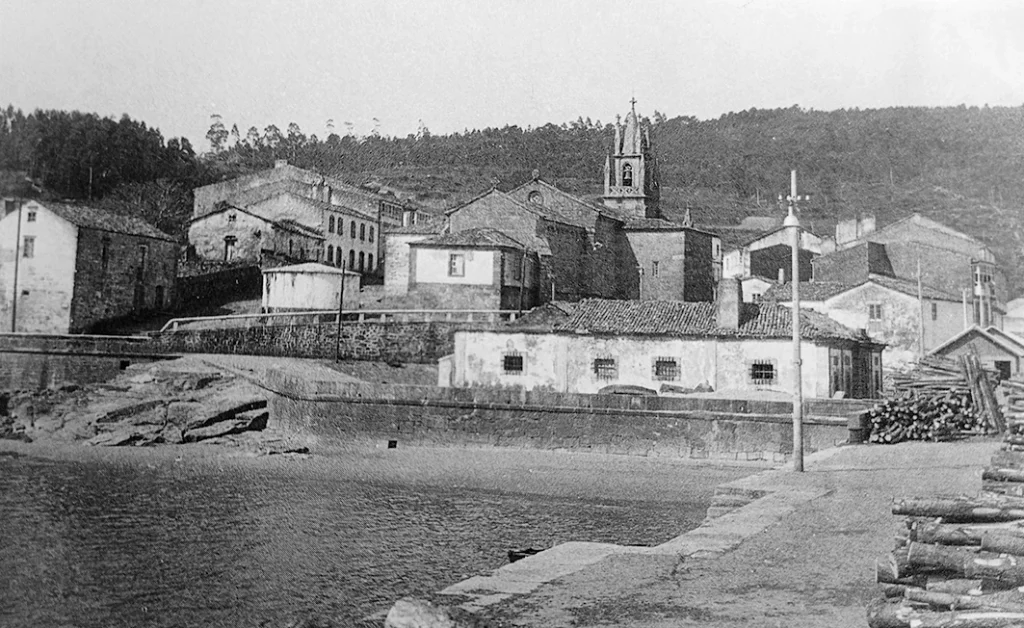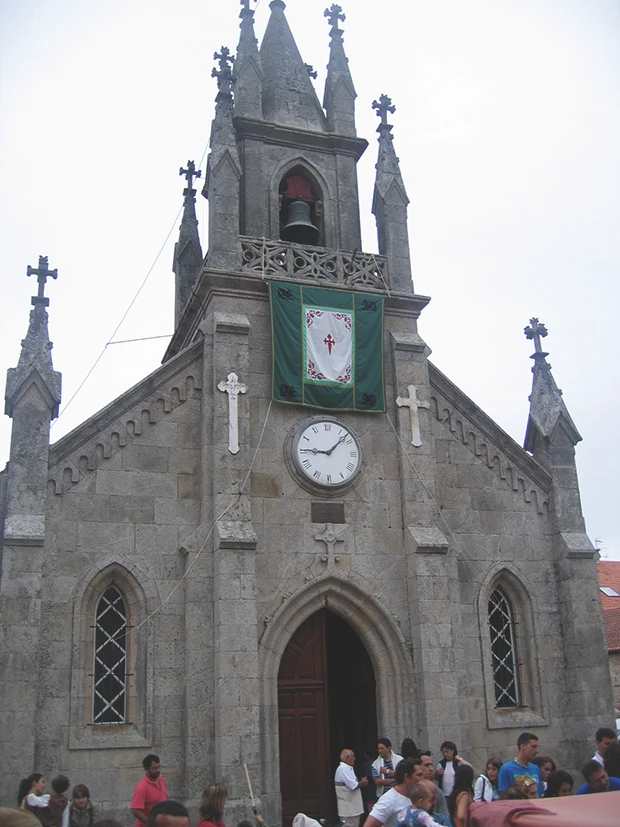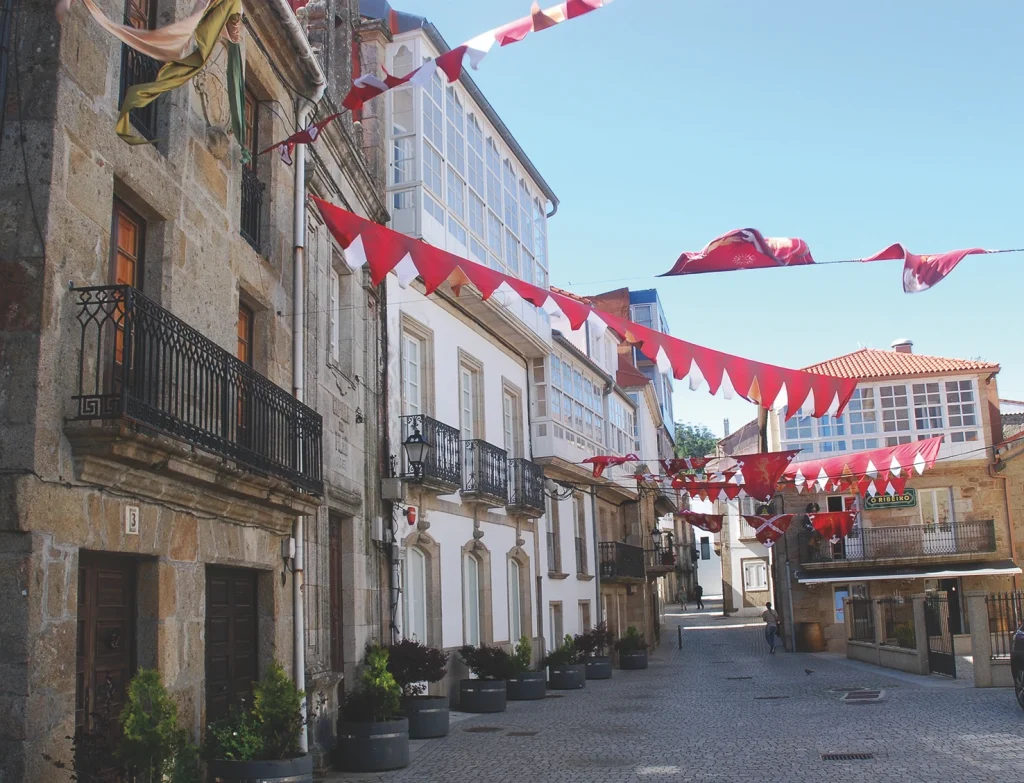History
The origins of this town and parish are related to the small settlement that was established close to the old church of Santo Andrés da Canle, which was further from the coast. When the number of raids from the sea began to decline in the 13th century, the population settled on the coast and established what is now Corcubión and built the new church of San Marcos, the patron saint of Venice. The change of patron saints from the previous one to San Marcos (Saint Mark) is an indication of the importance of the commercial exchanges that existed between the town and the Most Serene Republic.

The town was owned firstly by the Traba family and then by the Moscosos, the Condes de Altamira. They administrated a huge estate from a large house in the town. The Conde was responsible for appointing the judge and the aldermen of the area.
In the first half of the 18th c., Corcubión was home to about 200 inhabitants, most of whom made a living from fishing for sardines and conger. The second half of the century saw the arrival of the Catalans, who started to build sardine salting factories, a process that continued into the following century.
The town was attacked in the early 19th century by French soldiers, who looted and burned the town. However, Corcubión had become one of the most active and prosperous towns in Costa da Morte by the early 20th century. It had electric lighting, a telegraph service, a police station, banks, a salting industry, leisure associations, etc. Its status as the head of the court circuit meant that the judicial and administrative authorities also resided here.
The early twentieth century saw a great deal of emigration to South America, especially Argentina. The Sociedad Agraria de los Hijos del Partido de Corcubión, which was later called the Asociación Benéfico Cultural del Partido de Corcubión, was founded in Buenos Aries in 1922, and its many activities included the publication of a magazine called Alborada.
In the years of the Second Spanish Republic, both Corcubión and Cee were centres of intense trade union and political activity that was utterly wiped out after the rebellion of 1936.
Corcubión is now a small historical town of 1,400 inhabitants who work mostly in the service and tourist sectors It has a very important historical heritage. The town centre was declared a Historical-Artistic Site in 1984.
Route on foot around the town.
A good starting point for a walk around Corcubión is the Praza de Castelao, where you can see some stone built houses with galleries, such as the one owned by the Miñones family, which was very important both politically and economically before the Civil War. The most important member was José Miñones, a deputy in the parliament of the Second Republic and a victim of the repression under Franco. Close to this house is the house of the Dios y Pose family, with the chapel of O Pilar close by, which was converted into a municipal auditorium.
Set off from the Praza de Castelao and head up the Rúa San Marcos. As you start up the hill, you’ll see what was the manor house of the Altamiras, an old fortress that was built in the 15th c. and rehabilitated in the 17th and 18th centuries. It was the residence of the Counts when they came to the town and also acted as a gaol and courtroom. The street then takes you to the parish church of San Marcos, which still has some Romanesque features in the sanctuary, although most of the church is Gothic in style. The chapels of O Socorro and the Virxe do Carme were added in the early 18th c. The façade was built in the late 19th c. in the neo-Gothic style, and was designed by the architect Domingo Rodríguez Sesmero. The previous façade had been damaged by lightning on several occasions, the last of which took place in 1884 and killed 3 people and injured 60.

The carving of San Marcos da Cadeira, patron saint of the parish, can be seen inside, which consists of a Gothic image carved in the style of the Venetian school in the second half of the 15th c. It may have been donated by the Conde de Altamira.
Go up the Rúa das Mercedes. There you’ll see the Casa da Teixeira, with its large coat of arms, one of several large noble houses or pazos that can still be seen in the town. Carry on up the street to the end and stop at the Praza do Campo do Rollo, named after a pillar or column where criminals sentenced to death were executed. From here head down the Rúa Mártires, which passes through the Praza do Médico Ramón Carrera and takes you to the market square and the Casa do Concello, or town hall, which is located in the building commissioned by the philanthropist José Carreras Fábregas, who made a considerable fortune in Argentina. He set out to create an arts and crafts school in his home town. The building was designed by an architect and composer from A Coruña, Eduardo Rodríguez Losada, in 1924. Now head down the Rúa Clotilde Salomoni, and you’re back in the Praza de Castelao. Go left and continue along the Rúa Antonio Porrúa, the town’s high street and the one used to enter the town. Here you can see some interesting buildings of the late 19th and early 20th c., with galleries and balconies. Go up the the Rúa Peligros to the chapel of Santo Antón, a small shrine built in late 17th c. There are some excellent views from here of the ría and the town. Now you have two options: you can carry on down the Rúa Salvador Allende to the end and then return along the promenade, or go down the Rúa Peligros and when you come to the Rúa Rafael Juan go down a lane that crosses the street at a right angle and also takes you to the promenade. Carry on along the promenade. You’ll pass the viewing point of Ramón Pais, and from there a short walk brings you to the port, where this urban tour comes to an end.

Take the AC-552 from Corcubión and you’ll be back again in Fisterra; the starting point of this first route.